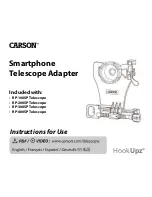
Health and Safety Information
291
●
Do not engage in stressful or emotional conversations that
may be distracting. Make the people
to
whom you are
talking aware that you are driving and suspend
conversations that have the potential to divert your
attention from the road.
●
Use your wireless phone to call for help. Dial the
emergency number in the case of fire, traffic accident or
medical emergencies. Remember, it is a free call on your
wireless phone!
●
Use your wireless phone to help others in emergencies. If
you see a car accident, crime in progress or other serious
emergency where lives are in danger, call the emergency
number, as you would want others to do for you.
●
If you see a broken-down vehicle posing no serious
hazard, a broken traffic signal, a minor traffic accident
where no one appears injured, or a vehicle you know to be
stolen, call roadside assistance or any other special non-
emergency wireless number.
Operating Environment
Remember to follow any special regulations in force in any
area and always switch your phone off whenever it is
forbidden to use it, or when it may cause interference or
danger.
When connecting the phone or any accessory to another
device, read its user’s guide for detailed safety instructions.
Do not connect incompatible products.
As with other mobile radio transmitting equipment, users are
advised that for the satisfactory operation of the equipment
and for the safety of personnel, it is recommended that the
equipment should only be used in the normal operating
position (held to your ear with the antenna pointing over your
shoulder).
Health and Safety Information
292
Electronic Devices
Most modern electronic equipment is shielded from radio
frequency (RF) signals. However, certain electronic equipment
may not be shielded against the RF signals from your wireless
phone. Consult the manufacturer to discuss alternatives.
Pacemakers
Pacemaker manufacturers recommend that a minimum
distance of 15 cm (6 inches) be maintained between a
wireless phone and a pacemaker to avoid potential
interference with the pacemaker. These recommendations are
consistent with the independent research and
recommendations of Wireless Technology Research.
Persons with pacemakers:
●
should always keep the phone more than 15 cm (6 inches)
from their pacemaker when the phone is switched on.
●
should not carry the phone in a breast pocket.
●
should use the ear opposite the pacemaker to minimize
potential interference.
If you have any reason to suspect that interference is taking
place, switch your phone off immediately.
Hearing Aids
Some digital wireless phones may interfere with some hearing
aids. In the event of such interference, you may wish to
consult your hearing aid manufacturer to discuss alternatives.














































